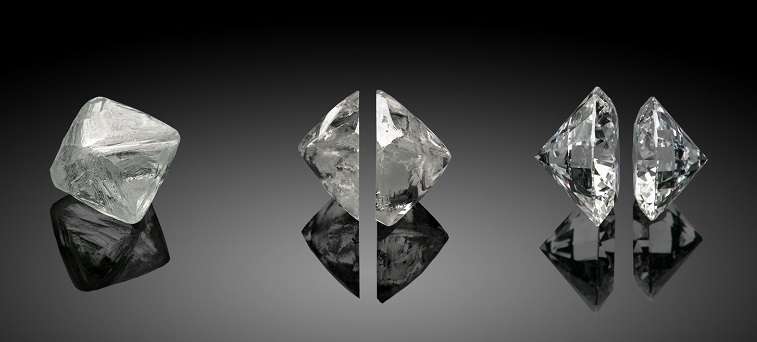
Moissanite Diamond: The Sparkling Alternative to Natural Diamonds
In today’s jewelry market, moissanite has emerged as a popular alternative to natural diamonds, offering a unique combination of brilliance, affordability, and ethical considerations. Whether you’re looking for an engagement ring, earrings, or a pendant, moissanite provides an attractive option that rivals traditional diamonds in many aspects.
Introduction to Moissanite
What is Moissanite? Moissanite is a gemstone composed of silicon carbide and was first discovered in 1893 by Henri Moissan, a Nobel Prize-winning chemist. Initially found in meteorites, moissanite is now lab-created to produce stunning gemstones for jewelry.
History of Moissanite Named after its discoverer, moissanite’s journey from rare mineral to popular gemstone began with advancements in gemological science. Its introduction as a diamond alternative revolutionized the jewelry industry, offering consumers a more affordable yet visually comparable option to natural diamonds.
Properties of Moissanite moissanite diamond possesses a hardness of 9.25 on the Mohs scale, making it highly suitable for everyday wear. Its refractive index of 2.65-2.69 exceeds that of diamonds, resulting in exceptional sparkle and fire.
Comparison with Natural Diamonds
Similarities with Diamonds Moissanite shares several optical properties with diamonds, such as brilliance and fire, making it difficult to distinguish from natural diamonds to the untrained eye.
Differences from Diamonds Unlike diamonds, moissanite has different chemical and optical properties, including a higher dispersion rate which creates more “fire” or flashes of color.
Cost Comparison One of the most significant advantages of moissanite is its affordability. Compared to natural diamonds, moissanite typically costs significantly less per carat, allowing consumers to choose larger or more elaborate pieces without a premium price tag.
Benefits of Choosing Moissanite
Affordability For budget-conscious buyers, moissanite offers an opportunity to own a beautiful piece of jewelry without the high cost associated with diamonds.
Brilliance and Sparkle Moissanite’s superior brilliance and fire make it a captivating choice for those seeking a gemstone that sparkles just as much as a diamond.
Ethical Considerations As moissanite is lab-created, it avoids the ethical concerns associated with diamond mining, such as environmental impact and labor practices.
Types and Cuts of Moissanite
Popular Cuts Moissanite is available in various cuts, including round brilliant, princess, cushion, and pear shapes, catering to different style preferences.
Shapes Available In addition to traditional shapes, moissanite can be found in unique cuts like oval, radiant, and emerald, offering versatility in design.
Color Options While traditionally colorless, moissanite can exhibit slight hues of yellow or green, although colorless variants are most sought after.
How Moissanite is Created
Manufacturing Process Moissanite is synthesized in controlled environments using advanced technology to replicate natural mineral formation, ensuring high quality and consistency.
Quality Standards Gem-quality moissanite undergoes rigorous testing to meet specific standards for brilliance, clarity, and durability, ensuring each gemstone meets customer expectations.
Environmental Impact Compared to diamond mining, moissanite production has a significantly lower environmental footprint, aligning with sustainable practices in the jewelry industry.
Caring for Moissanite Jewelry
Cleaning Tips Maintaining moissanite jewelry is straightforward; gentle cleaning with mild soap and water or a jewelry cleaner designed for gemstones is recommended.
Maintenance Advice Avoid exposing moissanite to harsh chemicals or abrasive materials to preserve its brilliance and clarity over time.
Longevity With proper care, moissanite jewelry can retain its beauty and sparkle for generations, making it a durable choice for everyday wear.
Where to Buy Moissanite
Online Retailers Several reputable online retailers specialize in moissanite jewelry, offering a wide range of styles, cuts, and customization options.
Physical Stores Many jewelry stores now carry moissanite alongside traditional gemstones, providing in-person consultations and customization services.
Customization Options Customizing moissanite jewelry allows buyers to create unique pieces tailored to personal preferences, from choosing the setting to selecting the perfect stone.
Moissanite vs. Other Diamond Alternatives
Moissanite vs. Cubic Zirconia While both are affordable diamond alternatives, man made diamonds, moissanite’s superior hardness and brilliance make it a preferred choice for long-term wear.
Moissanite vs. Lab-Grown Diamonds Although both are lab-created, moissanite and lab-grown diamonds differ in composition and optical properties, appealing to different consumer preferences.
Consumer Trends Increasing awareness of moissanite’s benefits, combined with evolving tastes in jewelry, has contributed to its growing popularity among consumers worldwide.
Conclusion
In conclusion, moissanite offers a compelling alternative to natural diamonds, combining affordability, brilliance, and ethical considerations. Whether you’re shopping for an engagement ring or adding to your jewelry collection, moissanite provides a sustainable and visually stunning choice that doesn’t compromise on quality or beauty.
